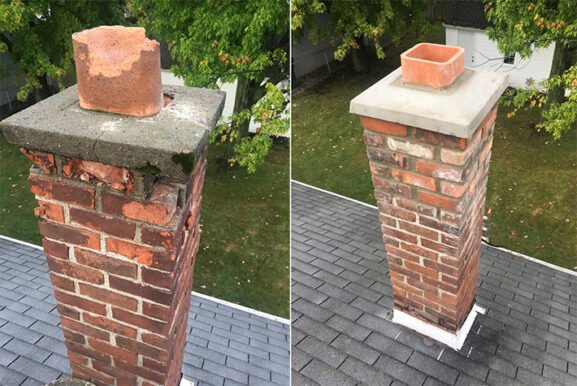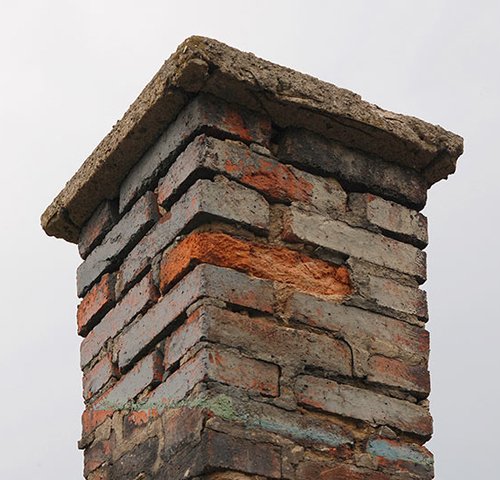Why You Shouldn’t Delay Chimney Cement Repair for a Safe and Long-Lasting Structure
Key Takeaways
- Chimney cement repair helps prevent moisture infiltration that can weaken masonry over time
- Damaged chimney crown or mortar joints often signal the need for immediate cement repairs
- Timely repairs protect your home’s structure and prevent more expensive damage later
- Cement deterioration is common in regions with freeze-thaw cycles and changing weather
Understanding the Role of Chimney Cement in Home Safety
Chimney cement plays a critical role in the structural integrity of your chimney system. Found in key areas like the crown and mortar joints, this specialized compound seals gaps and keeps moisture from seeping into bricks and flues. When it starts to break down due to age, weather, or poor installation, it opens the door to bigger structural issues. For homeowners in climates that experience freezing and thawing, chimney cement repair becomes more than just a routine maintenance task — it’s a crucial step in protecting your home.
Moisture is the biggest enemy of masonry chimneys. Once it enters through cracked mortar or deteriorating crown cement, it freezes, expands, and gradually tears apart the structure. Even minor cracks can escalate quickly. That’s why recognizing the early signs of cement failure and acting promptly can save thousands of dollars in future repairs.
Common Signs That Cement Repairs Are Needed
Chimney cement doesn’t fail overnight. It often gives off subtle clues before major problems develop. A crumbling chimney crown, flaking mortar joints, or visible cracks along the top of the chimney are common indicators. Water stains inside the fireplace or along interior walls can also point to exterior masonry issues, even if the damage isn’t visible from ground level.
You might also notice vegetation or moss growing between bricks, which suggests water is lingering within the masonry. In some cases, you’ll see rust on the damper or firebox — another warning sign that moisture is penetrating the system. Addressing these signs early with cement repair not only solves current issues but prevents deeper structural problems from developing.
Where Cement Repair Is Most Often Needed
One of the most vulnerable areas of a chimney is the crown. This top section, often made from cement-based material, seals the uppermost layer of the chimney and directs rain away from the flue and masonry. If the crown cracks or chips, water will infiltrate the interior, weakening both bricks and mortar.
Mortar joints between bricks are another area that may need repair. These joints are especially susceptible to wear and tear from extreme temperatures and weather exposure. If left unattended, the bricks around them can shift or become unstable, increasing the risk of a partial collapse.
In some cases, the chimney flashing — the metal barrier that seals the joint between the chimney and roof — can also suffer from adjacent cement deterioration. While flashing is usually metal, it’s often embedded in a cement base that requires routine inspection.
Causes of Cement Damage in Chimneys
Many factors contribute to the deterioration of chimney cement. One of the most common is weather-related stress. In colder regions, freeze-thaw cycles are particularly damaging. Water gets into tiny cracks, freezes, expands, and worsens the damage. Over time, this cycle breaks apart even high-quality cement.
Poor initial construction or improper mixing can also lead to early failure. If the cement used during installation was low-grade or mixed incorrectly, it may not adhere properly or withstand harsh conditions. Chimneys that were never waterproofed are more vulnerable to long-term deterioration as well.
Pollutants and acidic rain can speed up surface erosion too. According to the National Park Service’s technical preservation briefs, masonry structures exposed to acidic moisture over time degrade faster and require consistent upkeep to remain structurally sound.
Cement Repair Methods and What to Expect
Once damage is identified, the right repair method depends on its location and severity. For minor surface cracks in a chimney crown, a professional-grade crown sealer can often be applied. This flexible compound fills in small gaps and prevents moisture from getting deeper into the structure. However, this is typically a short-term solution and works best as a preventative measure.
For deeper cracks or erosion, the damaged crown or mortar joint may need to be fully removed and rebuilt using high-quality chimney cement. Tuckpointing — the process of removing and replacing deteriorated mortar — is often used to fix worn joints and reinforce brick alignment.
In many cases, applying a water-repellent sealant after repairs can help preserve the work and extend the life of the chimney. These sealants are different from standard waterproof coatings, as they allow moisture to escape from inside the brick without letting more water in.
Importance of Professional Inspection and Timely Repair
Chimney cement repair may seem like a small task, but its long-term impact is significant. Ignoring a cracked crown or loose mortar joints doesn’t just affect the chimney — it can lead to roof leaks, damaged walls, or even compromised indoor air quality if flue integrity is affected.
Professional inspections, especially before and after winter, are critical. Chimney specialists use tools and techniques that can catch problems the average homeowner may overlook. They also understand building codes and material requirements that vary by region and chimney type. Regular inspections can spot cement issues before they evolve into structural failures or safety hazards.
In most cases, a proactive approach to repair is far more cost-effective than waiting for major chimney restoration. The longer damage sits, the more extensive and expensive it becomes to fix.
Long-Term Benefits of Addressing Cement Issues Early
Taking care of chimney cement repair doesn’t just protect the structure today — it extends the lifespan of the entire chimney system. Homeowners who prioritize these repairs see fewer leaks, better energy efficiency, and improved home value over time. It also means fewer unexpected repairs during peak seasons when chimney services are in high demand.
Regular maintenance and timely cement work can reduce the need for full chimney rebuilds, which are far more costly and invasive. Whether you’re planning to stay in your home long-term or considering selling, a sound, well-maintained chimney is a strong investment.
Preventing Costly Chimney Damage Starts with Small Fixes
Cement repair may not seem urgent until visible damage appears, but by then, deeper problems are often already underway. Treating small cracks and deteriorating joints as soon as they arise is the best way to preserve your chimney and protect your home from more significant issues. When in doubt, consult a certified chimney technician who can assess your system and guide you through durable, long-term solutions.

